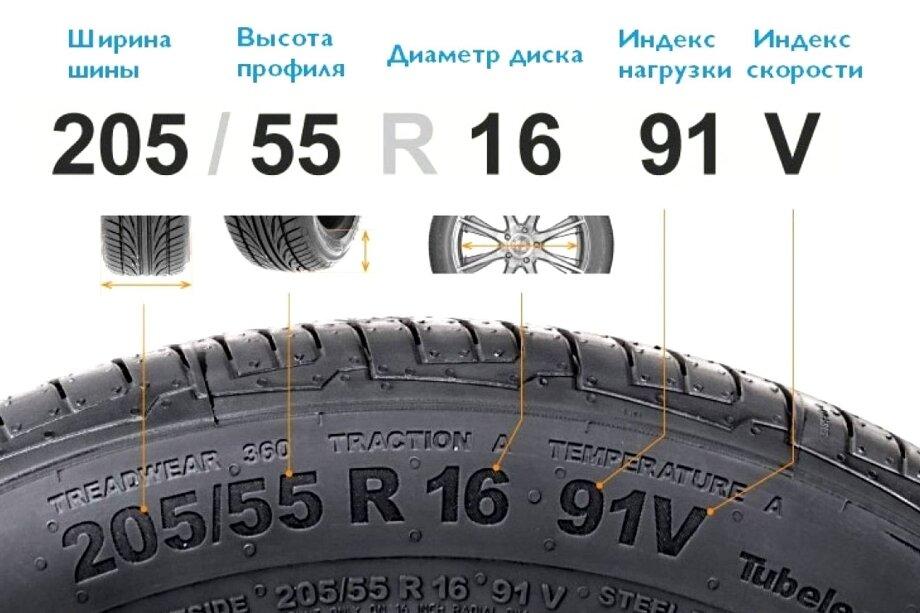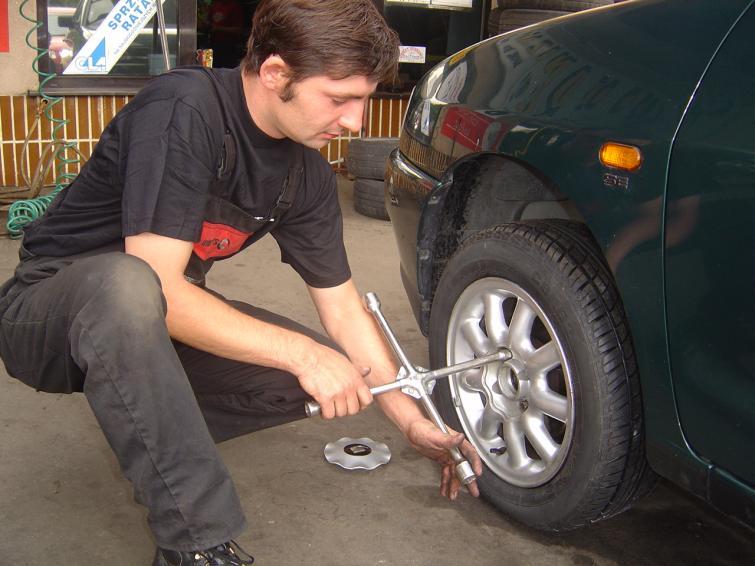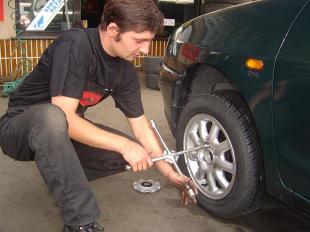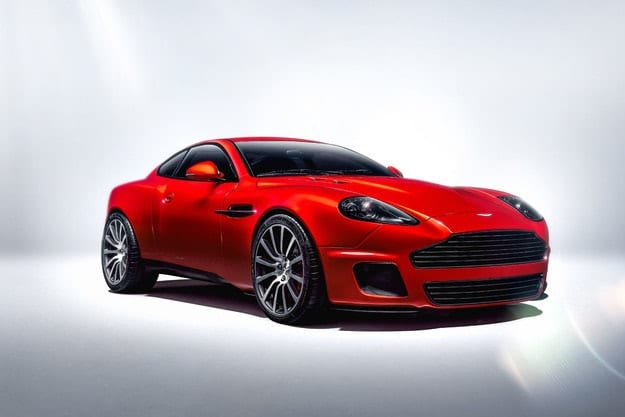
Looking for summer tires? What to look for: tests, ratings
 When buying tires, it is not always worth keeping an eye on the brand and the high price. Cheaper domestic tires in any conditions will be no worse than the more expensive tires of the most famous manufacturers.
When buying tires, it is not always worth keeping an eye on the brand and the high price. Cheaper domestic tires in any conditions will be no worse than the more expensive tires of the most famous manufacturers.

All over the country, there are more and more customers in vulcanizing plants. Long-term weather forecasts confirm that winter will not return to us, which is a sign that we may slowly think about replacing tires with summer ones. The least problematic are those drivers who only need a spacer with winter tires for those with summer tires. The rest, who have to buy tires, have a lot of trouble. In the labyrinth of new products and hundreds of models, it is difficult to choose something good and at a decent price.
First of all size
A purchase at an automotive store should be preceded by a choice of tire size. Follow the vehicle manufacturer's instructions. You can choose a replacement, but the difference in wheel diameter after installing them cannot be more than 2%. wheel and tire diameter provided by the manufacturer.
Narrow and high or wide and low summer tires?
The simplest rule of thumb is that narrow but tall tires are best for maneuvering potholes and climbing curbs. Wide, low-profile, while nice looking, more suited to road riding. There you can take advantage of them, especially the better grip. However, you have to be careful - tires that are too wide will cause the car to go sideways when driving on ruts that are still often seen on Polish roads.
Summer tires in the ADAC test - see which ones are the best
- You can't overdo it anyway. A tire that is too high or too low means strut misalignment and even friction against the body. Each size has its own replacement, and tires must be selected based on these professional calculations. For example, instead of the very popular 195/65/15, you can take 205/55/16 or 225/45/17,” explains Arkadiusz Yazva, owner of a vulcanization plant in Rzeszow.
Three types of tread for summer tires
There are currently three types of tires sold on the tire market: directional, symmetrical, and asymmetric. Let's start with the first one. At the moment, tires with such a tread are produced by most manufacturers, both in summer and winter versions. Due to the V-shaped tread, this type of tire can only be installed in the rolling direction specified by the manufacturer.
– The so-called herringbone pattern, i.e. characteristic slots in the directional bar, guarantees very good water drainage. Due to the large surface of contact with the ground, the car accelerates better and slows down more quickly. We recommend this type of tire primarily to owners of powerful cars, explains Wojciech Głowacki from oponeo.pl.
A directional tread is used, for example, in Goodyear Eagle GSD 3, Fulda Carat Progresso or Uniroyal Rainsport 2 tires.
Summer tire with asymmetric tread - a shared responsibility
Asymmetric tires are characterized by slightly different qualities. It is currently the most popular type of tire used in new vehicles in the B, C and D segments. The asymmetric tread pattern is different on the inside and outside of the tyre.
Usually manufacturers use more cuts on the inside. This part of the tire is mainly responsible for water drainage. The other half, located on the outside of the car, is responsible for the stable behavior of the car, both on straight sections and in corners.
All-season tires - apparent savings, increased risk of an accident
These types of tires must be installed on the correct side of the vehicle. You need to pay attention to the inscriptions "Inside" and "Outside" on his side and strictly follow them. The tire cannot be changed from the right wheel to the left wheel.
The biggest advantages of an asymmetric summer tire are, above all, greater wear resistance and quieter rolling. Among manufacturers, asymmetric tread patterns are most commonly found in mid-range and high-end tires. The most popular asymmetric tire models are Michelin Primacy HP, Continental ContiPremiumContact 2 or Bridgestone ER300.
Universal symmetry
The least convoluted solution is summer tires with symmetrical tread, recommended mainly for city car owners. Their main advantage is low rolling resistance, which means lower fuel consumption and quieter operation.
What is important, you can mount them as you like, because the tread is the same across the entire width. Unfortunately, these types of tires do not perform well on slippery surfaces and are slightly less efficient at evacuating water. With a symmetrical tread on the market, we will now get the Dayton D110.
Car suspension - step by step review after winter
The conclusions are pretty simple:
– For the Mercedes E-class, I would recommend a directional or asymmetric tire. Like the Volkswagen Passat. But for Fiat Punto or Opel Corsa, a symmetrical tread is enough. Due to poor performance, such a car will still not take full advantage of the directional tread, explains Arkadiusz Yazva.
Economy Class
Many drivers also think about choosing a tire manufacturer. It is worth remembering that a few large concerns - such as Good Year, Continental, Michelin or Pirelli - control most of the brands on the market. Cheaper tires offered by less prestigious brands are often tires that were offered under the names of the most famous manufacturers a few years ago when they were new.
Experts of the site oponeo.pl divide them into three groups. The cheapest, so-called economy class includes Sava, Dayton, Debica and Barum. Their tires are mostly proven but older solutions. Both in terms of compound and tread. Typically, economy class offers something in a given season that was new a few seasons earlier.
– We recommend these tires to owners of low and medium class cars, mainly for city driving. If the driver does not have high mileage, he will be happy with them, says Wojciech Głowacki.
The most popular tires in this segment are Sava Perfecta, Zeetex HP102, Barum Brillantis 2 or domestic Dębica Passio 2,
For more demanding
An intermediate solution that combines a moderate price with the best driving performance are products of middle-class brands. This segment includes but is not limited to Fulda, BFGoodrich, Kleber, Firestone and Uniroyal. These are tires for city cars as well as for sports cars and large limousines. All these tires are successfully operated in the city and on the highways.
– At the moment it is the most popular segment of the market. We can include, for example, Uniroyal RainExpert, Fulda Ecocontrol, Kleber Dynaxer HP 3 and Firestone Multihawk tires,” Glovatsky lists.
Aluminum rims vs steel - facts and myths
The last segment is premium, these are the most advanced products of well-known companies. The leaders here are Bridgestone, Continental, Good Year, Michelin, Pirelli. The tread shape and compound of these tires are the result of many years of research. As a rule, top-class tires perform better in independent tests, both in terms of safety and performance.
– High quality, unfortunately, translates into a higher price. Is it always worth paying? Don't think. The properties of such tires will be used only by those who travel a lot, mainly on long trips, and have a modern, powerful car. Installing such tires on urban or compact class cars is a fashion, says Yazva.
When should you change your tires to summer tires?
In addition to weather conditions - i.e. average daily temperature above 7 degrees Celsius for several days - the wear of the previous set of summer tires also matters. According to Polish law, tires with a tread thickness of less than 1,6 mm must be replaced. This is evidenced by the TWI wear indicators on the tyre.
However, in practice, you should not risk driving on summer tires with a tread thickness of less than 3 mm. The properties of such tires are much worse than the manufacturer expected.
It is also necessary to replace tires that have mechanical damage (for example, bubbles, cracks, swelling) and unevenly worn tread. It is best to change tires four times, or twice on the same axle as a last resort. Installing different tires on the same axle is not allowed. It is better to install new tires on the drive wheels.
Most tires have a service life of 5 to 8 years from the date of manufacture. Old tires need to be replaced.
News and higher prices
What have the producers prepared for this season? The attackers are talking, first of all, about prices, which rose by 20 percent in the spring.
– Production costs are rising. First, energy and raw materials are becoming more expensive. We are paying more and more for rubber and carbon black. In order to maintain profitability, we had to not only cut costs, but also raise prices,” explains Monika Gardula from Good Year's Dębica.
Brakes - when to change pads, discs and fluid?
However, leading manufacturers are introducing new models of summer tires. For example, Michelin offers the new Primacy 3. According to the manufacturer, this is a tire made to the highest safety standards. Its production uses a unique rubber compound with the addition of silica and resin plasticizers. Importantly, due to the low rolling resistance, tires save about 70 liters of fuel during their operation. The excellent driving performance of the tires has been confirmed by TÜV SÜD Automotive and IDIADA tests. In online stores, prices for Primacy 3 on 16-inch wheels start at around PLN 610. For a wider tire, for example, 225/55/R17, you will have to pay about PLN 1000.
Excellent grades, incl. ADAC also assembles Continental's ContiPremiumContact 5 in the test. These tires are recommended for medium and high class cars, designed for both dry and wet surfaces. Thanks to the use of a special tread pattern, the tire provides very good grip on the car, reducing the braking distance by up to 15 percent. The manufacturer guarantees that the new tread and compound provide a 12 percent increase in service life and an 8 percent reduction in rolling resistance. A tire in the popular size 205/55 16 costs about PLN 380. Prices for most sizes for 14-inch wheels do not exceed PLN 240. The popular 195/55/15 cost around PLN 420.
Shock absorbers - how to care, when to change?
An interesting novelty is also the Bridgestone Turanza T001, designed for higher class cars. The special rubber compound and innovative tread provide quiet rolling and slower tire wear. Tests carried out by independent organizations prove that the car rides safely and consistently on both wet and dry surfaces with these tires. Prices? 205/55/16 - from about PLN 400, 195/65/15 - from about PLN 330, 205/55/17 - from about PLN 800.
Exchange at old prices
Fortunately, the rise in tire prices is the only unpleasant surprise that awaits us at the vulcanizing plants.
– Prices for wheel replacements have remained at last year's level, because we understand that at current prices for other services and goods, people are having more and more difficult times. Comprehensive tire replacement and wheel balancing on steel rims costs about PLN 50. Aluminum ones are PLN 10 more expensive, says Andrzej Wilczynski, owner of a vulcanization plant in Rzeszow.
**********
Average tire prices after increase:
– 165/70 R14 (most small cars): domestic tires - from PLN 190 apiece. Foreign well-known manufacturers - PLN 250-350 per piece.
– 205/55 R16 (most modern passenger cars B and C): domestic tires, about PLN 320-350. Foreign - PLN 400-550.
– 215/65 R 16 (used in most fashion SUVs, i.e. city SUVs): domestic tires - from PLN 400 and above, foreign tires - PLN 450-600.
Governorate Bartosz
photo by Bartosz Guberna
